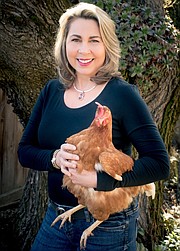Container and small space gardening: How to grow more in less space
No garden plot? No problem!
Growing in containers is a perfect solution for small-space gardening, for making an underutilized space productive, or for expanding your garden footprint. Almost any vegetable or small fruit can be grown in a container and there are many vegetable varieties that have been specifically developed for that purpose.
Growing in containers allows for flexibility, too. If your desired growing location doesn’t receive the six to eight hours of sunlight required for most vegetables, you can place containers where they’ll be sure to get adequate sunlight.
They are also a great way to bring pollinators, hummingbirds and butterflies into your garden when planted with nectar-rich flowers. These will help to pollinate vegetables, and they look great too!
Choosing plant varieties
When selecting vegetable starts, look for dwarf or bush varieties that have been developed specifically for small-space or container growing. Varieties with a smaller footprint, like determinate or patio tomatoes and bush varieties of vining vegetables, such as cucumbers and squash, take less space and are well-suited for containers.
Here are a few suggestions:
• Any determinate, dwarf or patio variety of tomato
• All varieties of peppers and eggplant
• Bush varieties of cucumber, squash, peas and beans
• All varieties of salad greens, lettuces, spinach, chard, kale and mustards
• Root and bulb vegetables such as radishes, beets, carrots, turnips, fennel and onions
• Small fruits such as strawberries, ground cherries and dwarf varieties of cane fruits
• Any herb, such as basil, cilantro, parsley, thyme, chives, oregano and sage
Choosing a container
Just about any container can be used, as long as it’s the appropriate size, has good drainage and is free of chemicals that could leach into the soil (treated or painted wood, etc.).
One key to successful container gardening is choosing the correct size. Since the plant’s roots will be contained within the vessel, you’ll want to make sure the there is enough room for proper root development.
Most vegetables need a minimum container depth of 8 inches — although onions can get by with a shallow 6 inches. Other vegetables, like tomatoes and carrots, require a container that is at least 12 to 16 inches deep or more.
Vegetables like tomatoes, peppers, eggplant and squash should be planted one plant per container. Cucumbers, when grown on a trellis within the container, can share space with herbs or radishes.
Container materials vary in appearance, cost and function. Clay pots tend to be heavier, dry out more frequently and need to be stored in a dry location over winter months to prevent cracking.
Plastic and resin containers are lightweight and easier to store, but dark-colored plastic containers will absorb more heat in direct sunlight and could potentially damage roots that grow near the container’s sides.
Inexpensive plastic storage tubs or half-barrels are perfect for plants that need a little more room to grow, such as larger tomato varieties and squash. Just make sure to drill adequate drainage holes.
For ease and functionality, consider grow bags. These durable fabric or plastic pouches come in various sizes and are breathable, reusable and easy to store at season's end.
Caring for container-grown plants
Containers have a tendency to dry out quicker (even large containers) and plants will need frequent watering and fertilizing to produce a good harvest.
Choose a quality potting mix with an organic mixture of peatmoss or coir, compost and vermiculite or perlite for good drainage, aeration and moisture retention.
Plants will need to be fertilized regularly. Constant watering can wash nutrients from the soil and many vegetables are heavy feeders that require a steady stream of nutrients to be productive. An organic, water-soluble or slow-release fertilizer is a good choice for regular feedings. Please read and follow all directions on the fertilizer label.
Container gardening adds interest and beauty to your landscape. Just like any gardening, overall success depends on having the right plant in the right location, the right container, quality potting mix and dedication to watering and fertilizing.
Here’s to turning your small space into a flourishing veggie patch!
• • •
Candace Godwin is a Certified Idaho Master Gardener. The University of Idaho Extension, Kootenai County Master Gardener program is located in the UI Research Park, 958 S. Lochsa St., in Post Falls. Learn more about us at https://www.uidaho.edu/extension/county/kootenai/garden or on Facebook. Visit us in person or email us at kootenaimg@uidaho.edu, or call us at 208-292-2525. IMG services are free to the public.







